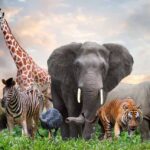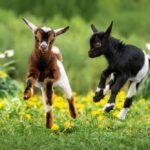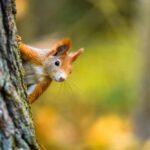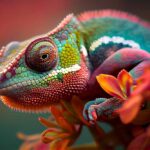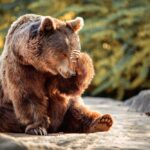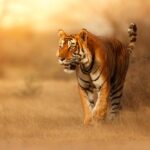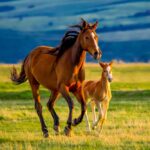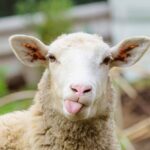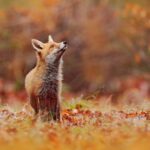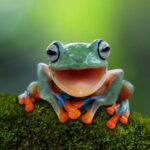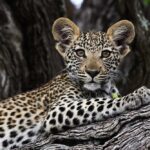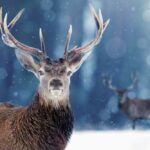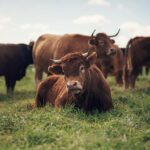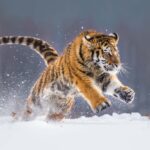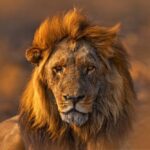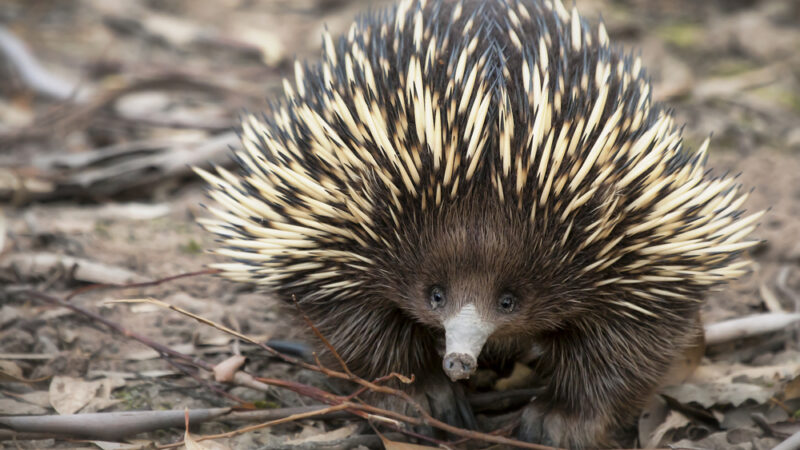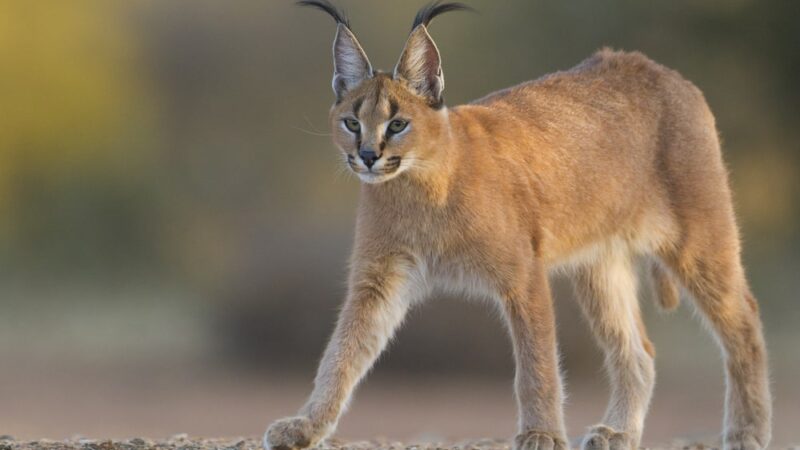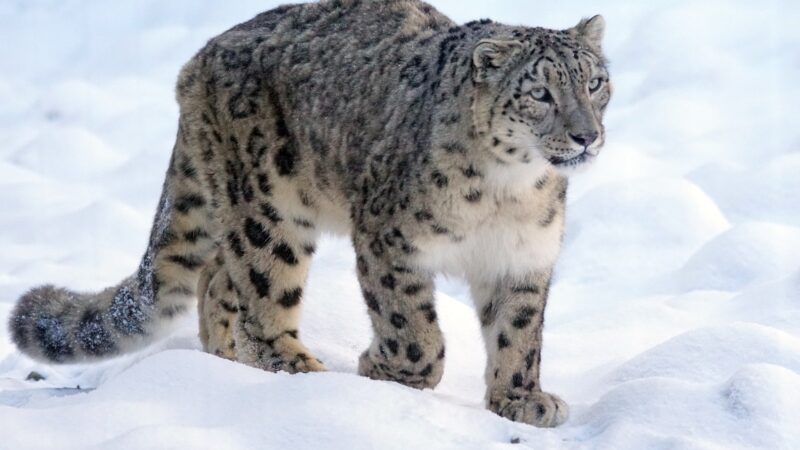Animal Animals
Life of the heaviest mammal and well-known animal elephant. Southern Africa is one of the most diverse wildlife sanctuaries on the continent a haven dedicated to the world’s largest land mammal the protection of elephants has created a vast wilderness sanctuary encompassing land and sea.
It is home to a variety of life including some of the world’s most formidable predators. This unique collection of animals and plants face a daily struggle for survival battling the elements and each other. Addo Elephant National Park lies on Africa’s southern coast and forms a wild corridor extending from the ocean into the interior. It extends across 1,800 square kilometers.
South Africa’s third-largest national park in the south rugged coastal islands rise from the sea home to hundreds of thousands of seabirds. They are surrounded by warm waters teeming with and bordered by a wild shore, where lush forests meet desolate dunes. North is a vast dry interior with Great Plains stretching to the Seberg mountains at a parched thirst land beyond padow. It is a land of contrasts where plants and animals must adapt to harsh conditions to survive the animal that lives in the center of this landscape.
It is at the heart of Eidos, the African elephant once ranged right across Southern Africa but in the 19th century, the ivory trade decimated the population by 1931. There were just 11 elephants left in this part of South Africa and something had to be done land was set aside to provide sanctuary to these last survivors. Addo elephant park was born it was vital since then a doze elephants have gone from strength to strength.
There are now 600 elephants are living here. All descended from the first pioneers but their narrow escape has left its mark unlike elephants in other parts of Africa. More than 90% of adult females are tuskless normally used for defense shows of dominance and for digging. They must do without them the reason is that by chance the original 11 animals did not carry the gene for tusk growth.
Despite this, the females have not been handicapped these herds have been extremely successful will high birth rates the population is blooming a doe. Now boasts one of the highest densities of elephants in Africa the park’s heartland is a paradise for the majestic Giants with water holes dotted throughout the central plains. This herd has spent the coolest part of the morning feeding but with temperatures heading above 40 degrees Celsius.
They head for a waterhole each elephant herd is led by the oldest female the matriarch. She (Female Elephant) guides her family on their quest for food and water the youngsters are the most eager to get wet. Before they drink give themselves a good splashdown.
Interesting facts about elephants
Elephants drink up to 75 liters of water a day.
Kumud helps reduce body temperature and also acts as an effective sunblock but it can also be treacherous mothers must keep a careful watch the water may be only shallow for an adult but the babies can submerge themselves. Mud is deep in places but for the calves, it is all about having fun this playful test of strength.
It is important in years to come to these young Bulls (baby elephants) will have to fight others for dominance and the right to mate but for now, their boisterous behavior is a bit of light-hearted entertainment. Eidos water holes are a regular meeting place for herds large numbers gather to quench their thirst but it is not only elephants that are drawn in creatures big and small. They rely on them but you need to be on your guard the congregation attracts predators after a refreshing break.
Elephants can travel up to 20 kilometers a day.
The matriarch leads her family back into the bush, in search of new areas to graze and must spend up to 14 hours feeding to satisfy their hunger vast areas of a doe are dominated by a plant known as speck boar or the bacon tree. Its fleshy leaves are tender and nutritious and elephants love them but it’s not a one-way relationship with their ruff feeding.
How elephants store water?
The herd breaks many branches dropping and trampling them into the ground. These send down roots of their own creating new growth but there is more than this to speak one’s success it is able to generate food for itself, in a way few other species can plant require sunlight and carbon dioxide to grow. But collecting carbon dioxide during the day means losing water through tiny pores in the leaves instead speculum collects, all its carbon dioxide and stores it during the cool night using it for photosynthesis.
During the day one light is available this means it can keep its pores closed during sweltering days saving large amounts of moisture this adaptation to life in a dry environment. With some help from the elephant’s speck Boehm can thrive padders speculum heartlands can sustain the world’s largest land mammal.
Elephant browsing the animals’ population is now so large that some plants which are not adapted are under threat numbers of aloes have dropped drastically in a dough. As elephant numbers have risen with some species disappearing completely a five-ton.
Interesting stories of Animals & other Creatures
Animals life
Animal wreaks havoc as it moves through the thicket crushing and uprooting the less robust species those that lack spec worms ability to throw down, new roots suffer as a consequence. But this apparent destruction opens up the landscape for other animals. Elephant pathways and areas of cleared ground are vital to adders rich community of the game.
Many species such as these kudu depend on the elephants to open up the landscape creating opportunities through the thick impenetrable spectrum scrub. A leopard tortoise one of the parks’ most charismatic creatures goes into remarkable sizes here. Some exceed 40 kilograms, he carries protection with him wherever he goes and with some luck, he could live for up to a hundred years.
Grassland animals
But his armor wasn’t always this robust and during the early years of life he was vulnerable to predation adders ticket provided crucial cover for him during this dangerous stage between the parks Suedes of succulent. Bushes are large areas of open grassland supporting a variety of graces able to tolerate higher temperatures than many other antelope. Red hartebeest spends long hours feeding in the full Sun males have shorter thicker horns than the females which equipped them for territorial battles.
But when faced by real danger their first instinct is to run the overdeveloped for quarters allow these animals to gallop over great distances without tiring but the heart abuse isn’t the only ones that make the grasslands their home. A host of creatures take advantage of areas cleared by the elephant’s cattle egrets pounce on insects disturbed by a herd of zebra.
As pure grazers planes or virtual zebra eat only grass sensitive lips gather blades between strong incisors cropping close to the ground. They digest this grass rapidly allowing them to get all the protein. They need from even the toughest least nutritious grasses but rapid digestion means they have to constantly top up the tank even in the most nutritious pastures.
An interesting fact about Zebra
Zebra spend as much as 60 percent of their time eating day and night.
Zebra’s feathered companions are never far behind but life isn’t all peace and quiet it is the breeding season and females are in high demand. A buildup of hormones in the female’s urine triggers the herd stallion into action and he has his work cut out if he is to pass his genes on successful zebra. Often used tender physical contact to establish and reinforce bonds and males are known to adopt a much gentler approach.
When courting young fillies, they are even known to groom each other scraping and nibbling each other’s neck and backs Adair’s grasslands are divided up into a number of territories and whilst some provide food. Others provide shelter living in families has advantages and drawbacks.
Mangoose animal
A yellow Mongoose is searching for a meal he’s on the hunt for insects but you better eat fast there is always an older brother or sister waiting to steal, your meal only quick submission prevents the fight from getting serious. So many large herbivores living in the park finding a source of food isn’t a problem for one resident.
Beetle
The adder flightless and dung beetle with many elephants and other large mammals around is always a steady supply of food but it’s still hard work he has to move his food parcel to his safe hiding place. It’s a long way away for him the dung ball is huge and it sometimes has a mind of its own but he is determined despite his apparent clumsiness.
He is remarkably clever he uses the dung balls to find his bearings according to the position of the Sun and then it’s back to work heading in the right direction. This endemic species is one of few dung beetles that can’t fly a major handicap in a search for food but it’s an evolutionary trade-off. The flight has been sacrificed for an amazing adaptation to life.
In pedos hot dry grasslands like other animals, beetles need to breathe and produce carbon dioxide waste in the process this has to be expelled from the beetle’s body but a lot of water is lost in the process. So this special beetle has evolved in a way to solve the problem the empty space under his shell usually taken up by wings.
In other species forms a specialized storage tank for carbon dioxide and he only has to exhale in a single burst every half hour like this he avoids dehydration by saving a significant amount of water. Vapor for these beetles dung means life they even lay their eggs in dung nests but for these adders, elephant waste is no good.
Only Buffalo dung will do luckily, there is plenty in the park younger stronger males have cast this old bull out of the herd he will live out his days alone on a desert island or join a small band of other aged males. They are known locally as dagger boys from the Zulu word, for Monday wallowing is one of their favorite pastimes.
Lion
They are the epitome of grumpy old men and are well known for their aggression weighing in at more than 600 kilograms. Only the most powerful predator would have a hope of taking down one of these balls and they don’t come more powerful than the lion. They rely largely on ambush tactics making use of cover and catching prey unawares for this reason adders open grass areas are crucial to buffalo herds. Gather in large congregations in the open minimizing the chance of ambush.
But buffalo are also armed while they’re impressive horns are used mainly in tussles for dominance combined, with the buffalos bulk. They make a formidable foe for even the most powerful killers. In fact, for the Lions, there’s seldom such a thing as an easy meal. Even the warthogs have armed to the teeth these pigs grow ivory tusks just as an elephant does but instead of two.
They have for this male’s large upper tusks are used in tussles with other boars the lumps of hardened skin below his eyes offer protection during these fights. It is these what like growths that give the warthogs their name but it’s the lower shorter tusks which predators fear these grind against the uppers. Every time he closes his mouth this continuously sharpens them and when wielded by a full-grown hog like this.
Animal Predators
They are a dangerous prospect indeed for predators and with mum around even piglets aren’t an easy meal at the first sight of danger. They’ll dash for their burrow but if cornered she will defend them viciously using her sharp tusks to slash and stab in the ongoing battle of the predator. Versus prey it is often the young and vulnerable animals that get singled out the park, is home to a large number of predators from the Regal lion to the slide jackal.
Like many of adders animal predators, they hunt under the cover of darkness night fairy gives the parks caste of killers of valuable advantage over their prey. Dawn reveals a tragedy alone elephant stands over the remains of her dead calf trapped in the water hole overnight. It was attacked and died but its mother has remained on lonely vigil elephants have strong bonds with their offspring.
Elephants generate strong bonds even nursing one another’s calves, while the rest of her herd drinks. She stays with the mother could she be trying to comfort her soon more and more. Gather the sadness of the mother’s situation seems to resonate with the family. They are cautious and quiet elephant herds often gather around the vulnerable in times of danger.
How Animals Survive in the Wild, Habitat and Adaptation
Habitat and Adaptation of Animals
Although she is much too big to be under physical threat they sense that the traumatized cow needs support. They offer it in the only way they know how my closeness. Eventually, the cow’s plight attracts the attention of a large bull touching the tip of his trunk to her mouth is a telltale sign of affection, could he be the father of the calf.
Eventually, the herd head off in search of food and the mother faces a terrible choice leave with her family or remain to mourn her baby her instinct is to stay in the ball stays with her. She entrusts her fallen important post to him and takes the opportunity to find some food. It’s been hours since, her last proper unbeknownst to her the boom after a time moves away to feed and she is forced to return to her baby cooperation between members of a group.
Animal’s survival
It is often the difference between survival and death but ultimately individuals look out for themselves. She’s hungry thirsty and exhausted while she refuses to abandon her baby. Every time she moves away from the caucus.
The scavengers pounce elephants have been witnessed protecting their dead for days, for the scavengers, the death provides a valuable meal and they too are refusing to give up despite their reputations. Jackals and hyenas are incredibly efficient predators and often hunt for themselves but they also never turned down a free meal.
Even if they have to wait for it with her strength weakening. It is only a matter of time before she will be forced to eat but for now even after several hours. The mother refuses to leave her herd has moved on and for her own welfare she needs to join them but she is not ready yet. A doe is a protected area but it remains a harsh environment for all the animals, that live in its varied landscape far from the central scrublands.
Beyond the range of elephants, are a doze other wilderness areas surprisingly one of its most Arab landscapes. It is right next to the ocean the mighty Alexandria dune field 50 kilometers long and up to five kilometers wide untouched dunes rise as high as 140 meters in some places. They are so old, they have become compacted slowly solidifying into layers very little survives here but amazingly this barren land feeds an abundance of life offshore despite appearances.
There is water here deep beneath the dunes groundwater rich in nitrates gathers in aquifers above a rocky substrate with enough build-up. These waters overflow running straight from beneath the dunes into the sea. The nitrates they carry contribute to the growth of huge blooms of phytoplankton, which forms the base of the marine food chain and allows life to thrive the waters on Eidos. The coastline is some of the most abundant in Africa supporting an astounding array of life.
Marine animals
Here dolphins swim in huge excitable pots by Eidos second species of the gentle giant the southern right whale like the elephants. Man hunted these whales to the brink of extinction but thanks to their protection in international breeding waters, they’ve made a spectacular comeback. There is an apex predator here that rivals any found on dry land perhaps a doze ultimate hunter, the great white shark.
These killers patrols 700 hectares of thriving marine environment falling under doze protection preying mainly on penguins and seals, living on the many offshore islands. The coastline is also home to the largest breeding colony of Cape gannets in the world. The abundance of fish in the waters has allowed them to thrive in great numbers around 200 thousand live on the aptly-named Bird Island, which provided them with a safe environment to raise their chicks under the park’s protection.
Their future will be secured for generations to come as it will for the animals on the mainland Adam’s wild coastline appears far removed from its landlocked interior but there is a direct connection the ocean feeds. The land with water carried inland by air currents in the park’s easternmost corner moist air blows in from the warm Indian Ocean.
Desert animals and plants
Watering the lush indigenous forests of the woody Cape shade and moisture-loving plants, thrive in this damp microclimate. It’s cool and protected and supports life, like nowhere else in the park the sea air also travels further inland and provides much-needed water to the plants and animals. Across a doze central scrublands but there is one place the water cannot reach as the moist air currents flow inland.
They collide with the barrier of the Seberg mountains forced up they cool and condense falling as rain on the coastal side but on the inland side, a rainfall shadow exists known as the thirst lands just 225 millimeters for a year and summer temperatures reach a scorching 45 degrees Celsius. Here plants have been forced to evolve very different strategies for survival and few are better adapted than the blue euphorbia.
Saving water Plants
It’s all about saving water the euphorbias branches grew vertically so when the Sun is at its hottest high in the sky, it strikes only their narrow tops reducing water loss through evaporation. Their branches also store a large amount of fluid in the form of milky sap, this liquid reservoir is poisonous and unpalatable to most animals.
Saving the plant from damage caused by feeding Shepherd’s tree takes a less conservative approach to life in its dry environment. It sends roots deep into the ground reaching reserves other plants can’t instead of saving that water like the euphorbia, it immediately uses it to grow dense nutritious leaves and
Berries a rare food source for the animals living in the thirst lands, those animals then spread the tree’s seed across the countryside ensuring the survival of the species. There are few animals that can survive such an environment among them of a cape mountain zebra.
The lack of rain means there isn’t enough grass to support them in the numbers, seen upon adders lush grasslands. This male’s herd numbers only five and they still struggle to find all they need mayors have been known to fatally injure. The foals of others to reduce competition for their own young a seemingly cruel characteristic evolved for survival under the harshest conditions. Even a doze most devoted parents cannot always protect their vulnerable offspring.
Elephants survival
After almost two days of guarding her dead calf, the young mother has no choice but to leave exhausted and starving. She is driven to eat and drink for her own survival elephants are known to have long memories, so we cannot tell how long the trauma of her loss will last but the chances are high that she will bear another cough sooner or later. The experience of death will be replaced by the joy of a new life.
Elephants normally give birth every five years.
But having lost her young calf, she will come into estrus sooner, once pregnant. She should give birth again in just under two years rejoining her herd. It is the first step of this journey. They will accept her back and the company familiar relatives will give her some comfort. A family unit the building block of the elephant. Society will remain strong and she will be part of it, her offspring and theirs will wander the landscape of this incredible park for decades to come to a doe.
It is a land of extremes with areas of great richness and places of scarcity and hardship life for its flagship species, the elephant is good with low mortality rates. The population is ever-growing but even for these Giants life in the wild is fraught with danger and survival is never guaranteed.
Reference: Wikipedia, Britannica
